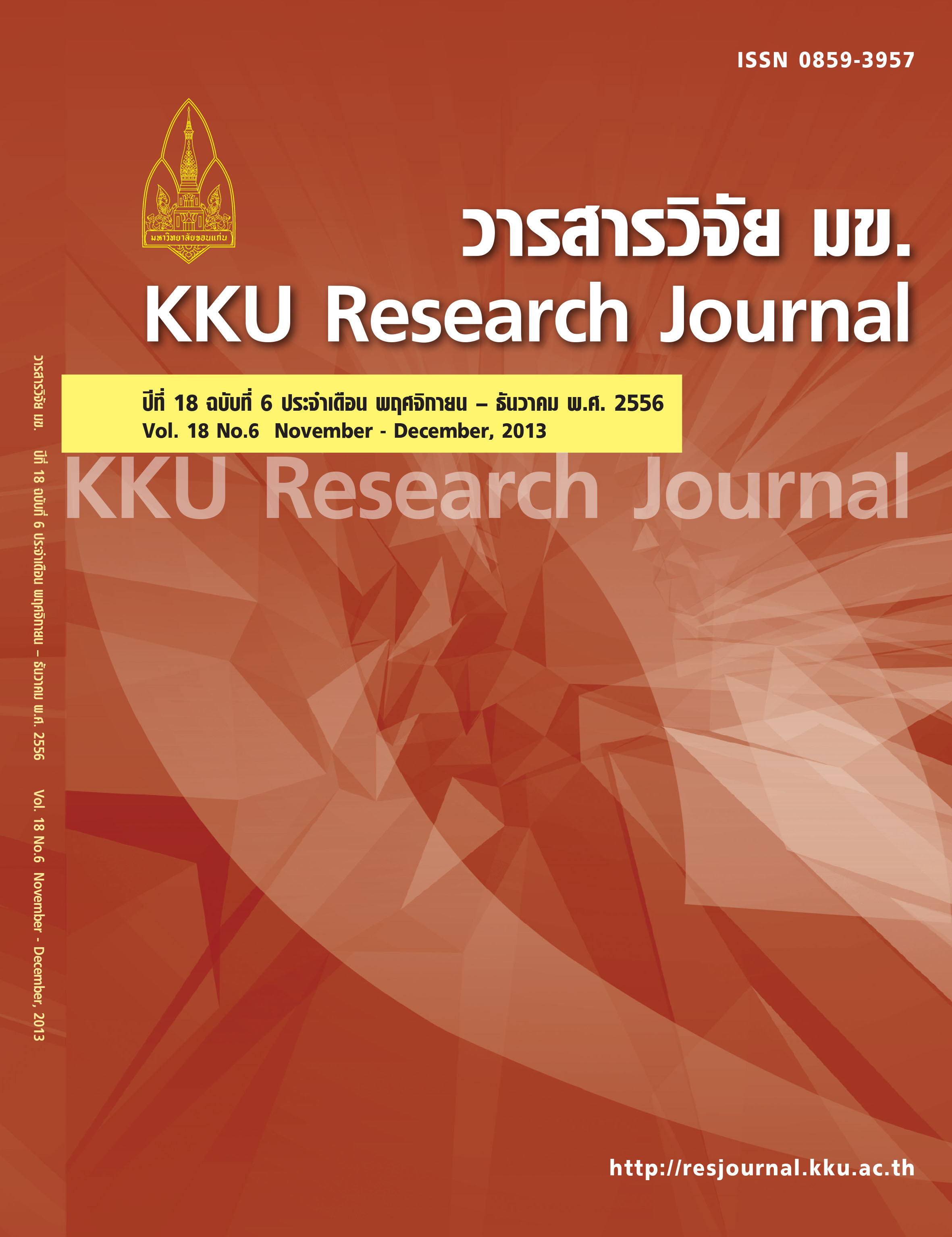Assessment of lead levels in some children’s plastic toys
Main Article Content
Abstract
The objectives of this study were to determine total lead concentrations, and assess potential health risks, in children’s plastic toys. A survey study was collected by obtaining 100 children’s plastic toys from the three metropolitan cities (Nakhon Si Thammarat Province, Phattalung Province, and Songkla Province).Children’s plastic toys were collected to determine lead concentration by atomic absorption spectrophotometer. Of the 100 children’s plastic toys samples, 13 contained > 600 parts per million (ppm) of lead, the maximum level of concern for the US CPSC. The average lead level in the samples as 287.93? 721.02 ppm (range 3.01-4486.11 ppm). Among seven colors, pink products had higher lead levels (average 731.63? 1375.16 ppm, range 3.82-4486.11 ppm) than products of other colors. Price was not significantly associated with lead level (r=0.167, p=0.096). Forty samples had hazard quotients of 1.0 (low hazard level). Therefore, lead contamination in children’s plastic toys should be investigated regularly. Education of parents would help them realize the toxicity of lead, and encourage them to make more strenuous efforts to protect their children.
Article Details
How to Cite
Decharat, S., Maneelo, S., & Chuchay, S. (2017). Assessment of lead levels in some children’s plastic toys. Asia-Pacific Journal of Science and Technology, 18(6), 1026–1033. retrieved from https://so01.tci-thaijo.org/index.php/APST/article/view/83033
Section
Research Articles


